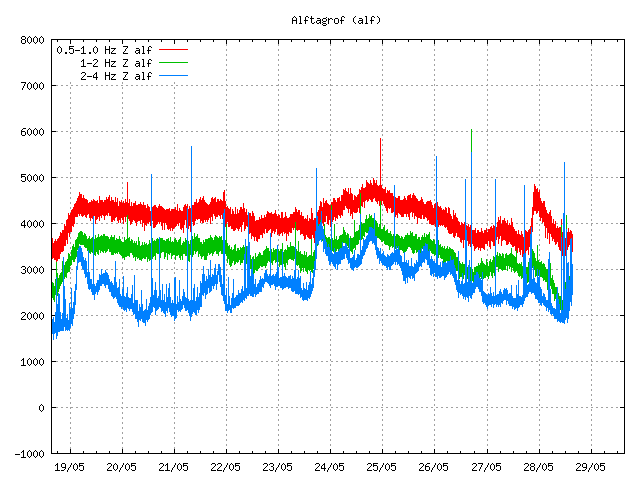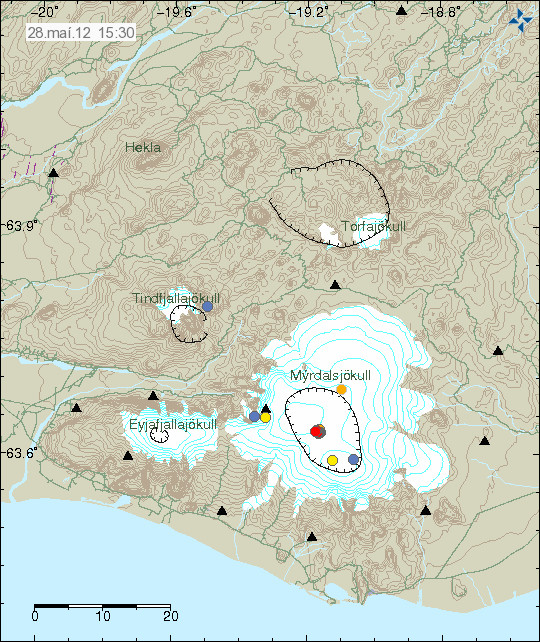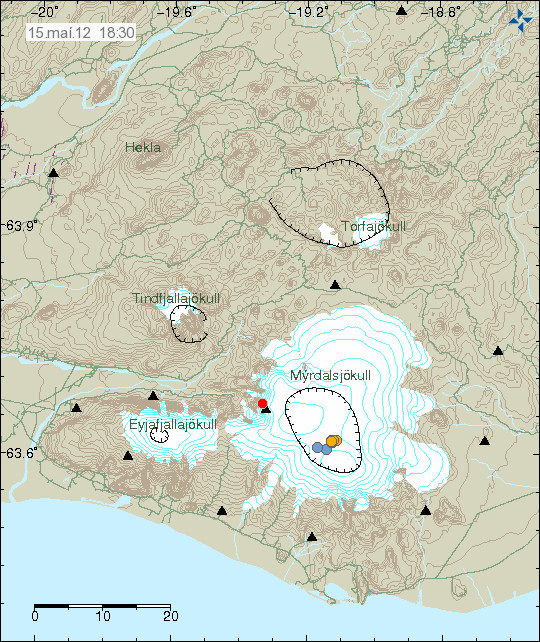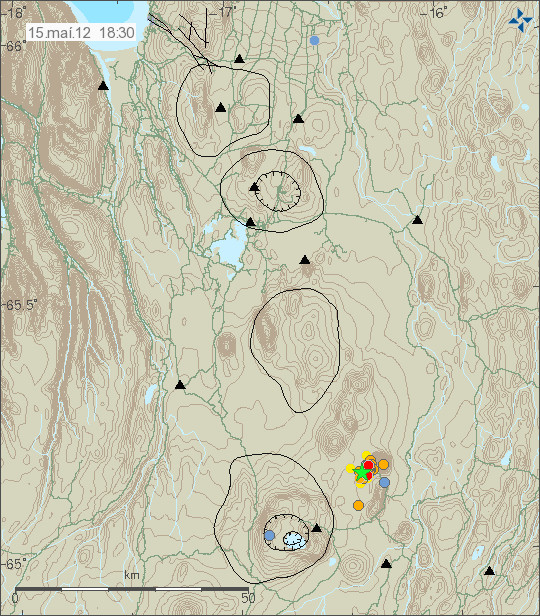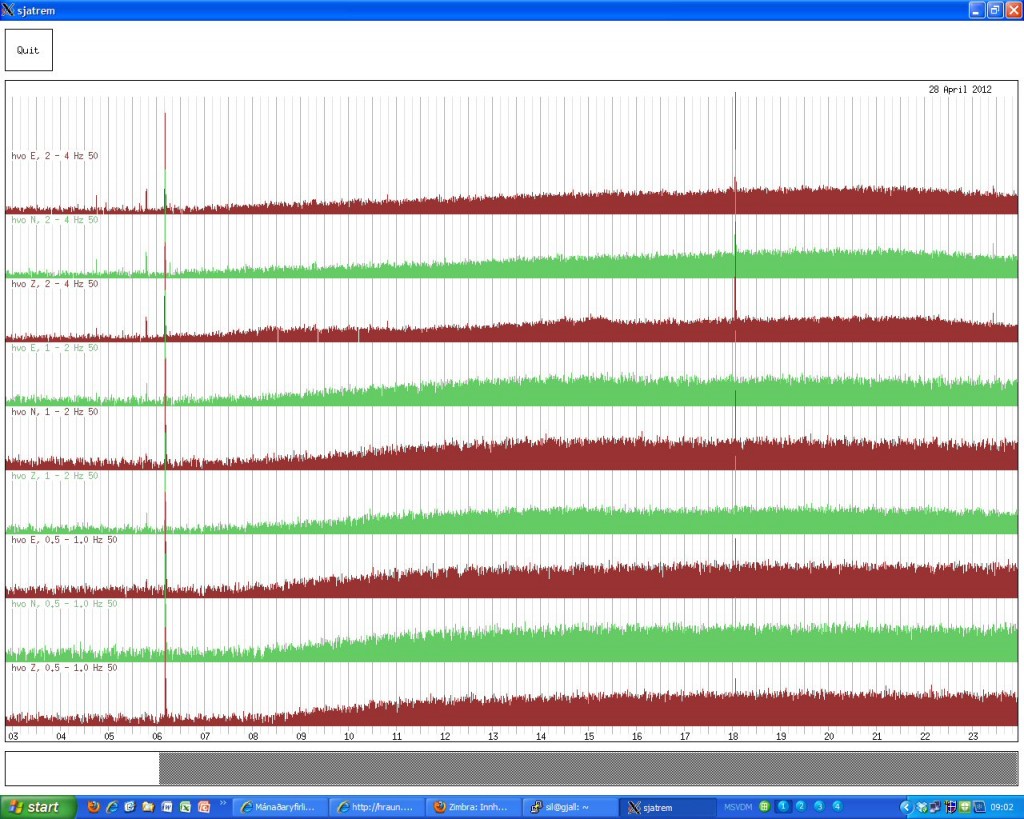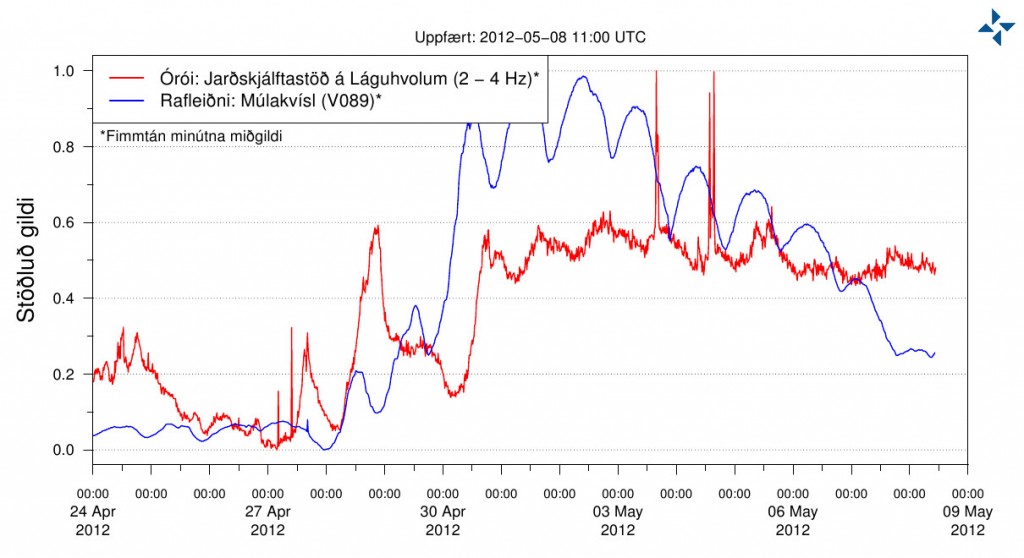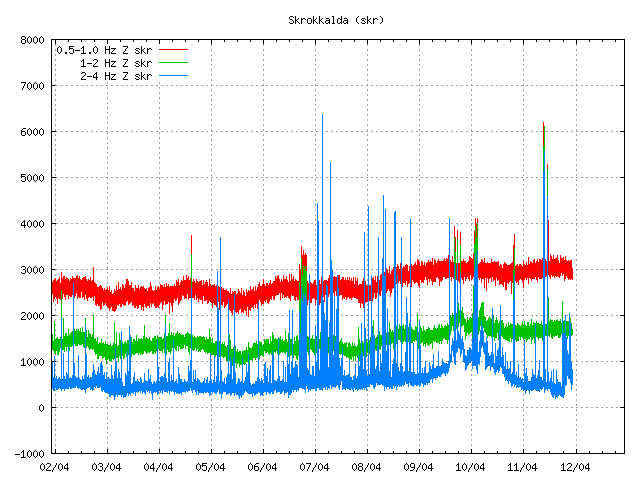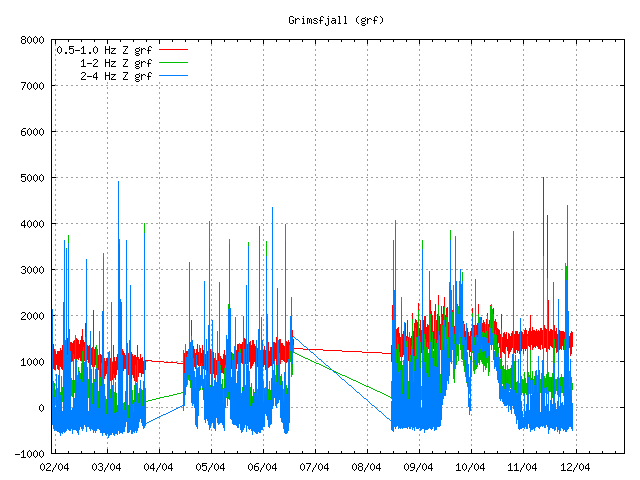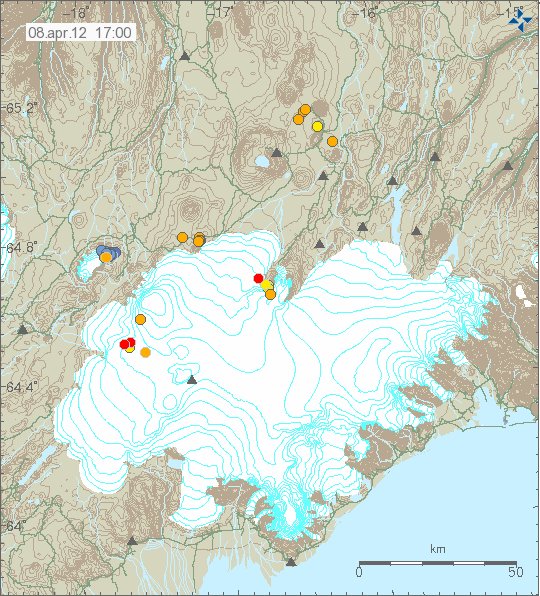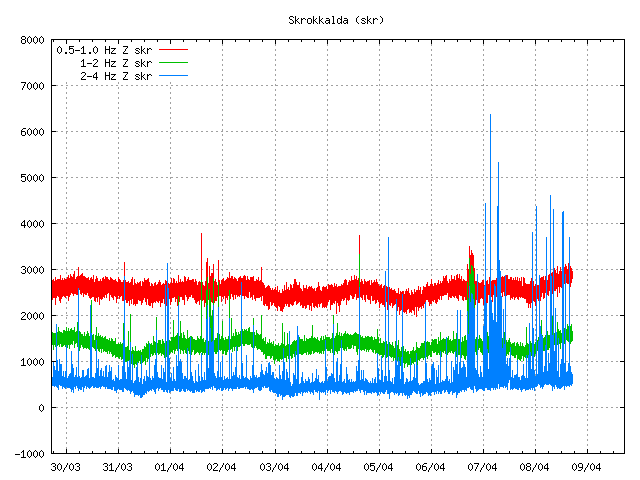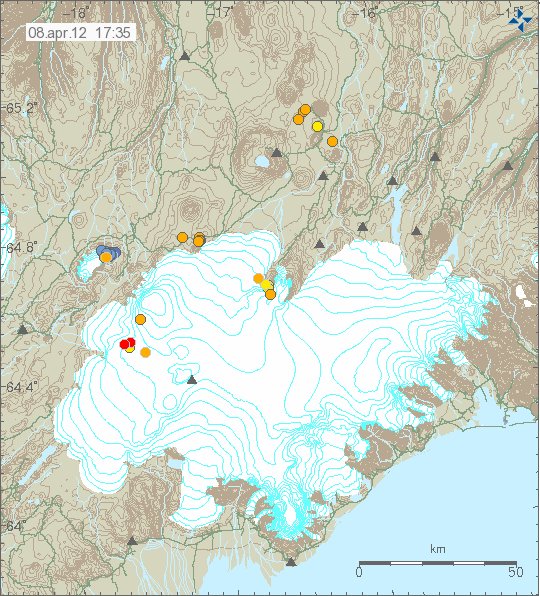Yesterday there was an earthquake swarm in Katla volcano. Over 50 earthquakes have been recorded so far. But this earthquake swarm stopped yesterday at 16:22 UTC. Most of the earthquakes where shallow, with depth less then 1 km. Largest earthquake had the magnitude of ML2.5. No harmonic tremor was detected following this earthquake swarm. But that is unlike what did happen last year, when a similar earthquake swarm took place in Katla volcano.

Earthquake activity in Katla volcano yesterday (07. June. 2012). The main areas appear clearly on this map. The small dot SE on the caldera rim is an area that became active after last years minor eruption. What is taking place there is still an mystery. Copyright of this picture belongs to Iceland Meteorological Office.
This activity appears to be similar to what happened around 9th July, 2011. But no harmonic tremors are taking place in Katla volcano following this earthquake swarm.
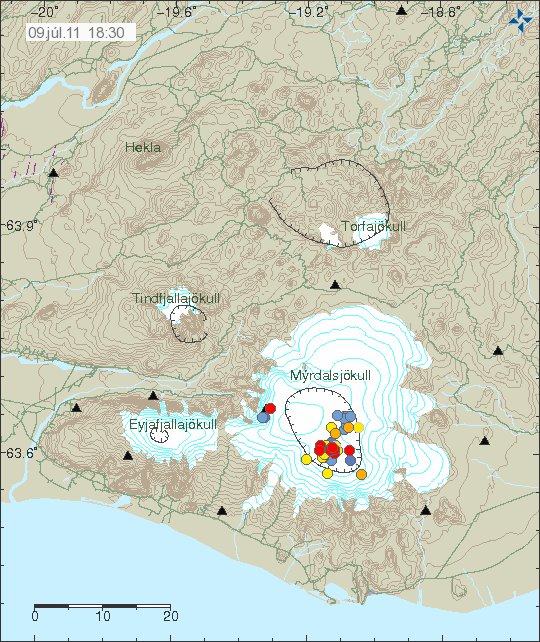
Earthquake activity in Katla volcano on 9. July 2011. This good to compare the earthquake activity yesterday (image above this one). Copyright of this picture belongs to Iceland Meteorological Office.
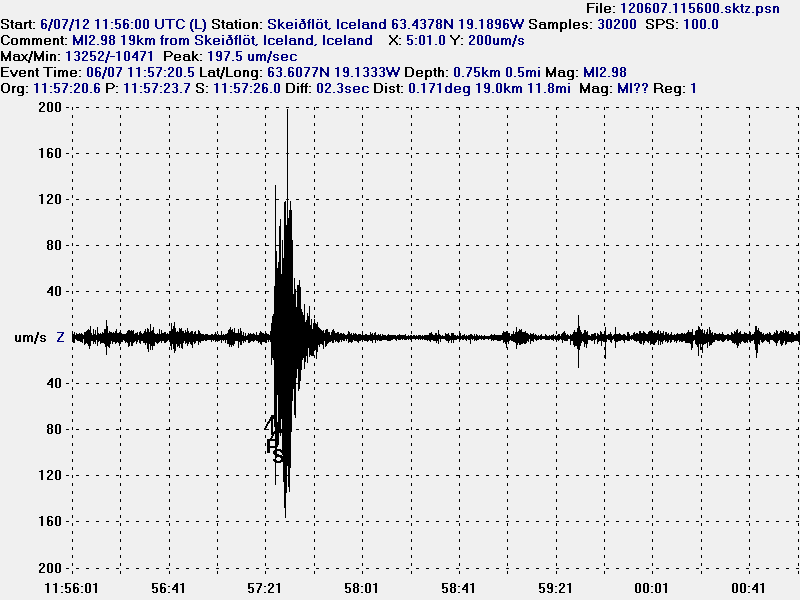
The ML2.98 magnitude earthquake that happened in Katla volcano yesterday (07. June. 2012). This is the earthquake as it was recorded on Skeiðflöt geophone station. This image is released under Creative Commons License. See License page for more details.

Same earthquake as above. But filtered at 1Hz and this is how the earthquake appeared in Heklubyggð geophone station. This image is released under Creative Commons License. See License page for more details.
So far this is just an earthquake swarm. As there are no harmonic tremor signal taking place as the earthquake swarm is taking place. I do not know if there has been any glacier flood following this earthquake swarm. But if there was. It would mean that hydrothermal vents under Mýrdalsjökull glacier have been emptying out. It happens regularly in glacier such as Mýrdalsjökull glacier.

